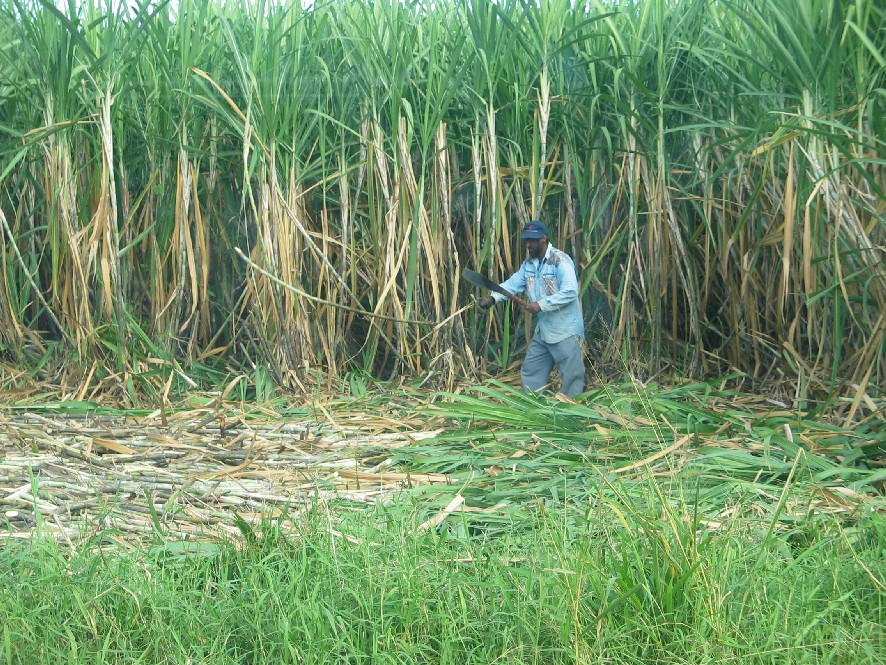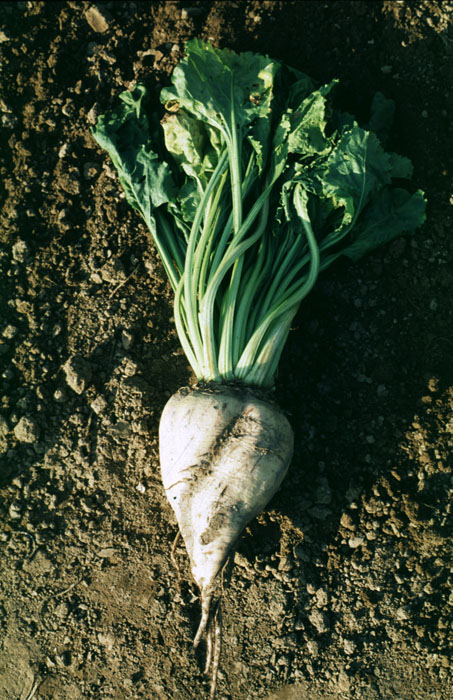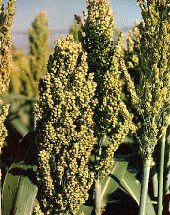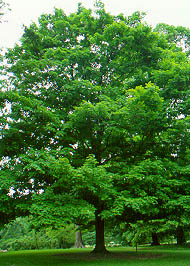|
|||||
|
|||||||
|
    An initiative of :Stichting Food-Info
|
| Food-Info.net> Products > Sugar Sources of sugarTable sugar or sucrose is extracted from plant sources. The most important two sugar crops are sugarcane (Saccharum spp.) and sugar beets (Beta vulgaris), in which sugar can account for 12%–20% of the plant's dry weight. Some minor commercial sugar crops include the date palm (Phoenix dactylifera), sorghum (Sorghum vulgare), and the sugar maple (Acer saccharum). Sugar caneSugarcane or Sugar cane (Saccharum) is a genus of between 6–37 species (depending on taxonomic interpretation) of tall grasses (family Poaceae), native to warm temperate to tropical regions of the Old World and Pacific. They have stout, jointed fibrous stalks 2–6 m tall and sap rich in sugar. All the species interbreed, and the major commercial cultivars are complex hybrids mainly from Saccharum officinarum, S. spontaneum, S. barberi and S. sinense.  Sugar cane (Source) Sugarcane cultivation requires a tropical or subtropical climate, with a minimum of 600 mm of annual rainfall. It is one of the most efficient photosynthsizers in the plant kingdom, able to convert as much as 2% of incident solar energy into biomass. Sugarcane is propagated from cuttings, rather than from seed. Each cutting must contain at least one bud, and the cuttings are usually planted by hand. Once planted, a stand of cane can be harvested several times; after each harvest, the cane sends up new stalks, called ratoons. Usually, each successive harvest gives a smaller yield, and eventually the declining yields justify replanting. Depending on agricultural practice, 2 to 10 harvests may be possible between each planting. Average yield is 100 tons of cane per hectare or 10 tons of sugar per hectare. Sugarcane is harvested by hand or mechanically. Hand harvesting accounts for more than half of the world's sugarcane production, and is especially dominant in the developing world. When harvested by hand, the field is first set on fire. The fire spreads very rapidly, burning away the leaves, but leaving the water-rich stalks and roots unharmed. Harvesters then cut the standing cane just above the ground with knives. A skilled cane harvester can cut 500 kg of sugarcane in an hour.  Harvesting (Source) Sugar BeetThe sugar beet (Beta vulgaris L.) is a member of the Chenopodiaceae subfamily and the Amaranthaceae family, is a plant whose root contains a high concentration of sucrose. The sugar beet is directly related to the beetroot, chard and fodder beet. The sugar beet is a temperate climate biennial root crop. It produces sugar during the first year of growth in order to see it over the winter and then flowers and seeds in the second year. It is therefore sown in spring and harvested in the first autumn/early winter. The beet stores the sucrose in the bulbous root which bears a strong resemblance to a fat parsnip. A typical sugar content for mature beets is 17% by weight but the value depends on the variety and it does vary from year to year and location to location. This is substantially more than the sucrose content of mature cane but the yields of beet per hectare are much lower than for cane so that the expected sugar production is only about 7 tons per hectare.  Sugar beet (Source) Up until the latter half of the 20th century, sugarbeet production was highly labour-intensive, as weed control was managed by densely planting the crop, which then had to be manually thinned with a hoe two or even three times during the growing season. Harvesting also required many workers. Although the roots could be lifted by a plough-like device which could be pulled by a horse team, the rest of the preparation was by hand. One laborer grabbed the beets by their leaves, knocked them together to shake free loose soil, and then laid them in a row, root to one side, greens to the other. A second worker equipped with a beet hook followed behind, and would lift the beet and swiftly chop the crown and leaves from the root with a single action. Working this way he would leave a row of beet that could then be forked into the back of a cart. Harvesting is now entirely mechanical. The sugarbeet harvester chops the leaf and crown from the root, lifts the root, and removes excess soil from the root in a single pass over the field. A modern harvester is typically able to cover 6 rows at the same time. The beet is left in piles at the side of the field and then conveyed into a trailer for delivery to the factory. The conveyor removes more soil -a farmer would be penalised at the factory for excess soil in his load. Date palmThe date palm (Phoenix dactylifera) is a palm, extensively cultivated for its edible fruit. Due to its long history of cultivation for fruit, its exact native distribution is unknown, but the date palm probably originated somewhere in the desert oases of North Africa, and perhaps also Southwest Asia . It is a medium-sized tree, 15-25 m tall, often clumped with several trunks from a single root system, but also often growing singly. The leaves are pinnate, up to 3 m long, with spines on the petiole and about 150 leaflets; the leaflets are 30 cm long and 2 cm broad. Sugar can be extracted from the fruits, but this is only done locally on a small scale.  Date palm in Cyprus (Source) SorghumSorghum is a genus of about 20 species of grasses, native to tropical and subtropical regions of Eastern Africa, with one species native to Mexico. The plant is cultivated in Southern Europe, Central America and Southern Asia. Sugar can be extracted from the seeds, but, like the date palm, this is only done locally on a small scale.  Sorghum (Source) Sugar mapleThe sugar maple (Acer saccharum) is a prominent tree in the hardwood forests of eastern North America . It is the largest American maple species, reaching heights of 30-37 m tall. Maple sugar has been produced in North America for many centuries and is still used as sweetener, mainly as a partially refined maple syrup. Maple sugar is about as sweet as standard granulated sugar and consists mainly of saccharose (sucrose) and glucose.  Sugar maple tree (Source) Source : More information on sugar :
|
|
| ||
| Food-Info.net is an initiative of Stichting Food-Info, The Netherlands | ||||||